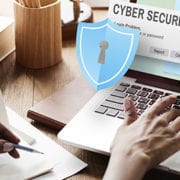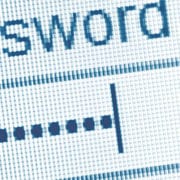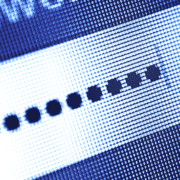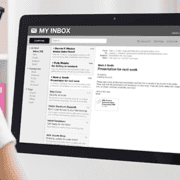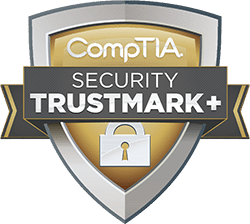The beginner’s guide to network security
Whether your business is a start-up, regulated industry, or just celebrated its 40th anniversary, it’s no secret that protecting your network is an essential part of protecting your business.
The data held in your network is the lifeblood of your organization. You need a good network security strategy to protect it from threats like cyber attacks, unauthorized access, data breaches, and theft.
Your network and devices are constantly connected to other networks through the internet. While necessary to get business done, it also opens your network up to threats if you don’t have the right security measures in place. Vulnerabilities caused by accessing unsecured networks could lead to your data being leaked faster than you can say “trade secrets”.
Network Security Doesn’t Have to Be Complicated
Learn the basics of protecting your data and business with our beginner’s guide to network security.
This guide will cover:
Physical Network Security
Most people think of the internet and cyber threats when they think of network security. But the physical safety of your network is equally important.
Basic security measures for your office like video surveillance and an alarm system will also protect your network.
Conduct regular vulnerability assessments and determine what equipment is the most valuable. That may mean it costs the most, or that it holds the most important information.
Keep your most valuable devices, like servers, locked in a secure location and restrict access to only those who need it.
Related Articles:
Password Policies
Weak passwords are one of the easiest ways for cybercriminals to gain access to your network.
From easy to guess passwords, like 123456, to never changing the default password on a new device, passwords can either be a security asset or liability.
Keep your network safe by teaching your employees how to create secure passwords.
Here are a few password best-practices to keep in mind:
- Create long passwords that use a combination of lowercase and uppercase letters, symbols, and numbers.
- Create passwords that aren’t obvious. Don’t use “password” as your password.
- Create new passwords and don’t use the same password twice.
- Create passwords with nonsense words.
Related Article:
Control Access to Your Network
You need to know who is accessing your network.
Along with strong password practices, mentioned above, consider requiring authentication when users log in to your network.
- Two-factor authentication requires the standard username and password login details of any other authorization system, along with another identifying factor, for example, a code sent to an alternative device or some kind of information unique to that user.
- Three-factor authentication brings things up a peg, asking for verification of a biometric nature, such as voice recognition or fingerprint.
Segment your network to make sure if one part of your network is penetrated, the hacker won’t have access to your entire network.
Set controls for who has access to what devices and limit the software that can be installed on network devices.
Your data security should be of the utmost importance, and that means being extra strict about who can access it.
Related Article:
Software and Hardware Solutions
Keeping on top of your software and hardware is key to implementing impenetrable network security to detect, monitor and fight attacks. This includes your servers and routers.
It’s a much bigger hassle to try and resolve cyber threats when your systems are lagging and you don’t have the proper upgrades in place necessary to get everything up and running again.
- Firewall – enforce your access control by using a sturdy firewall to determine who can see what. Use a firewall to decide what sort of content can be accessed on the office network without problems (for example, sites you might consider to be questionable) and to repel cyber intrusions.
- Antivirus and antimalware – before scanning for certain threats, you should already have a plan for preventing ransomware. Antivirus and antimalware will scan your network for such problems, like worms and trojans. These programs should be assessed and updated frequently.
- Data loss prevention, otherwise known as DLP, prevents data misuse and strictly monitors inappropriate distribution of sensitive data.
- Conduct penetration tests to find and fix vulnerabilities in your network before they can be exploited.
- Upgrade your hardware.
- Upgrade your software on all of your devices for the same reason.
Related Articles:
Educate Your Employees
Training your staff on cybersecurity might not be on the top of your to-do list, but it should be.
Any employee who uses your network or computers needs to have a basic knowledge of cyber threats and how to protect against them.
Train your employees about email security and phishing scams and make sure everyone is aware of common and uncommon cyber threats. Have a clear plan of action, simple enough for everyone to follow.
To be the most effective, training should not just be a one and done thing.
Cyber threats change and so do responses to them. Consider holding monthly or quarterly training to make sure network security remains at the forefront of your employees’ minds.
Related Articles:
Data Backup and Recovery
The final step to making sure your network is secure is including a data backup and disaster recovery plan as part of your business continuity plan.
Hopefully, you never have to use it, but having a plan could mean the difference between staying in business or shutting down.
“60% of small companies go out of business within six months of a cyber attack.” – Small Business Trends
Your data backup and recovery plan should include the following
- Regular backups at a frequent schedule
- Off-site data backup storage
- A process for accessing and restoring backups quickly
Frequent testing and reassessment of your plan is also important to make sure it stays up-to-date.
Contact your managed IT services provider today to make sure you have the right network security measures in place to keep your business safe.


